Insektenhotel
*
Insektenhotel *
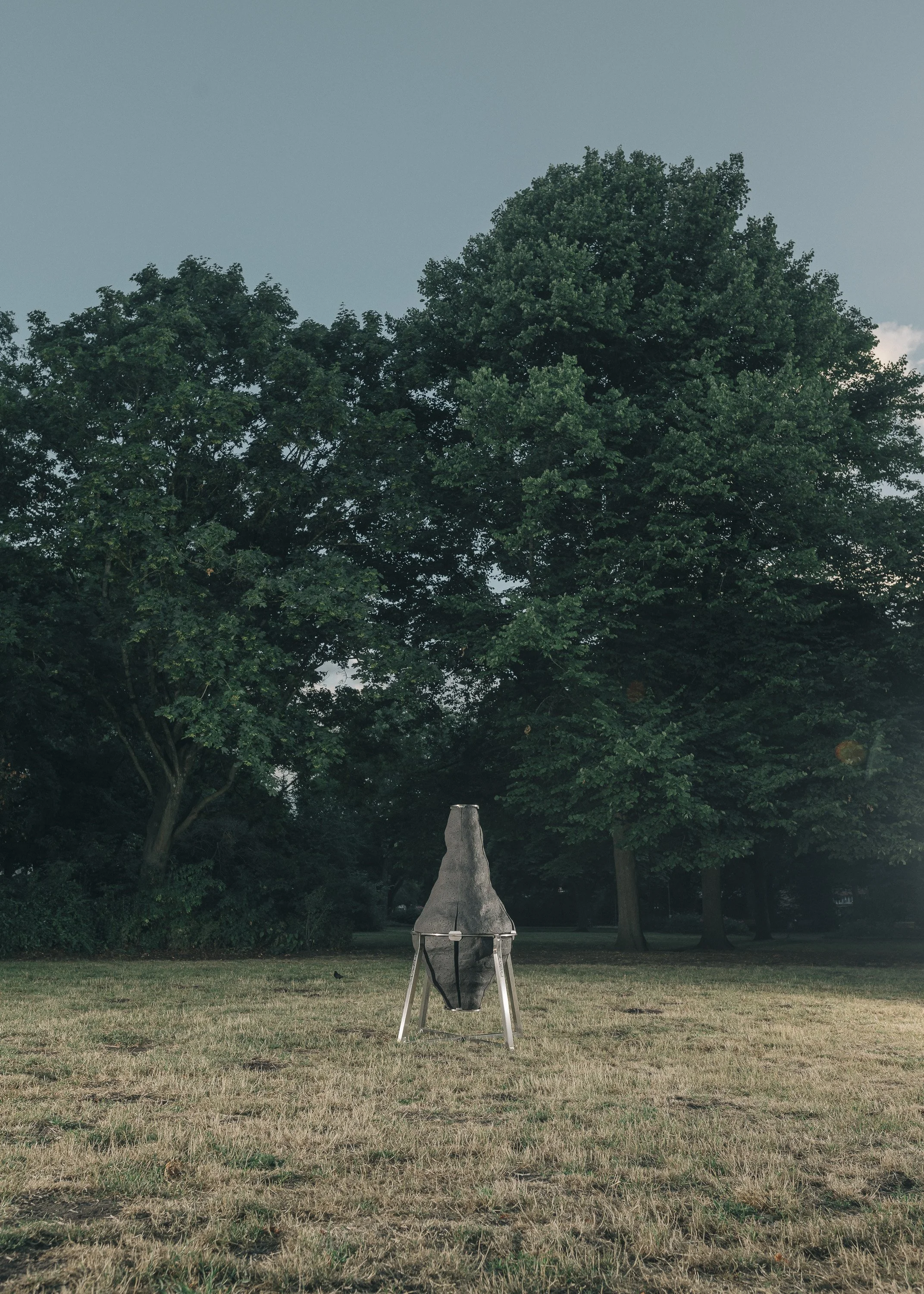
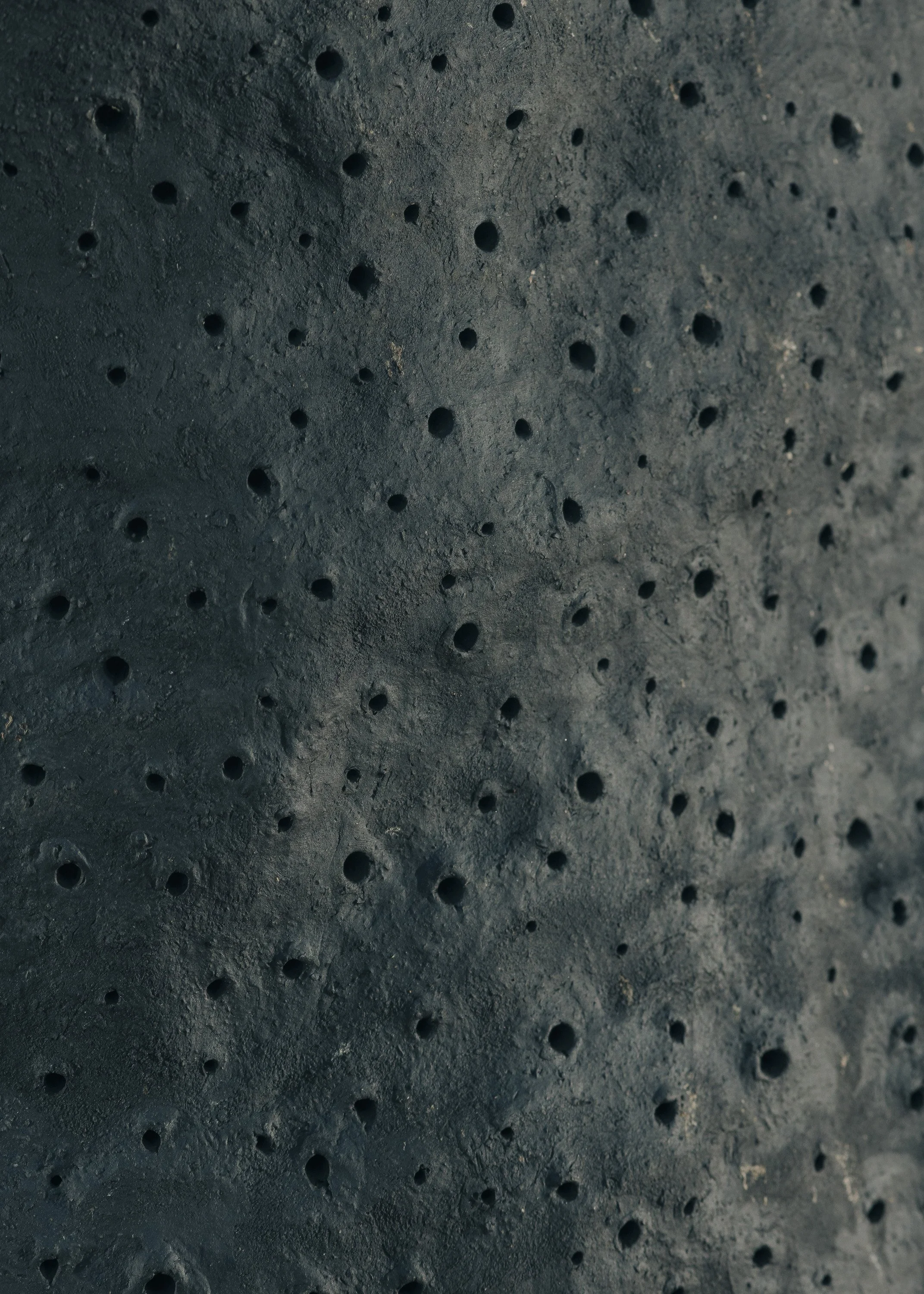
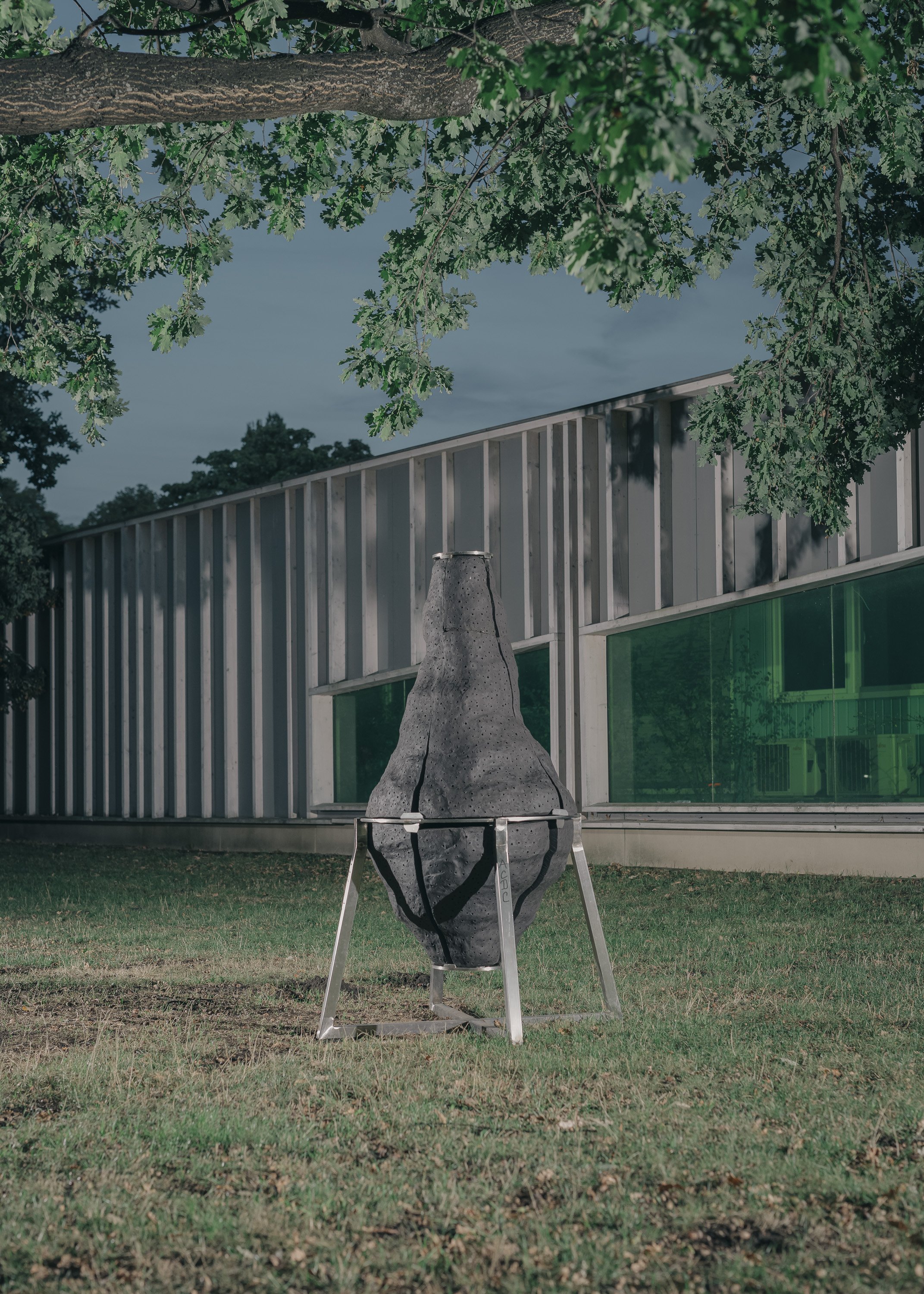
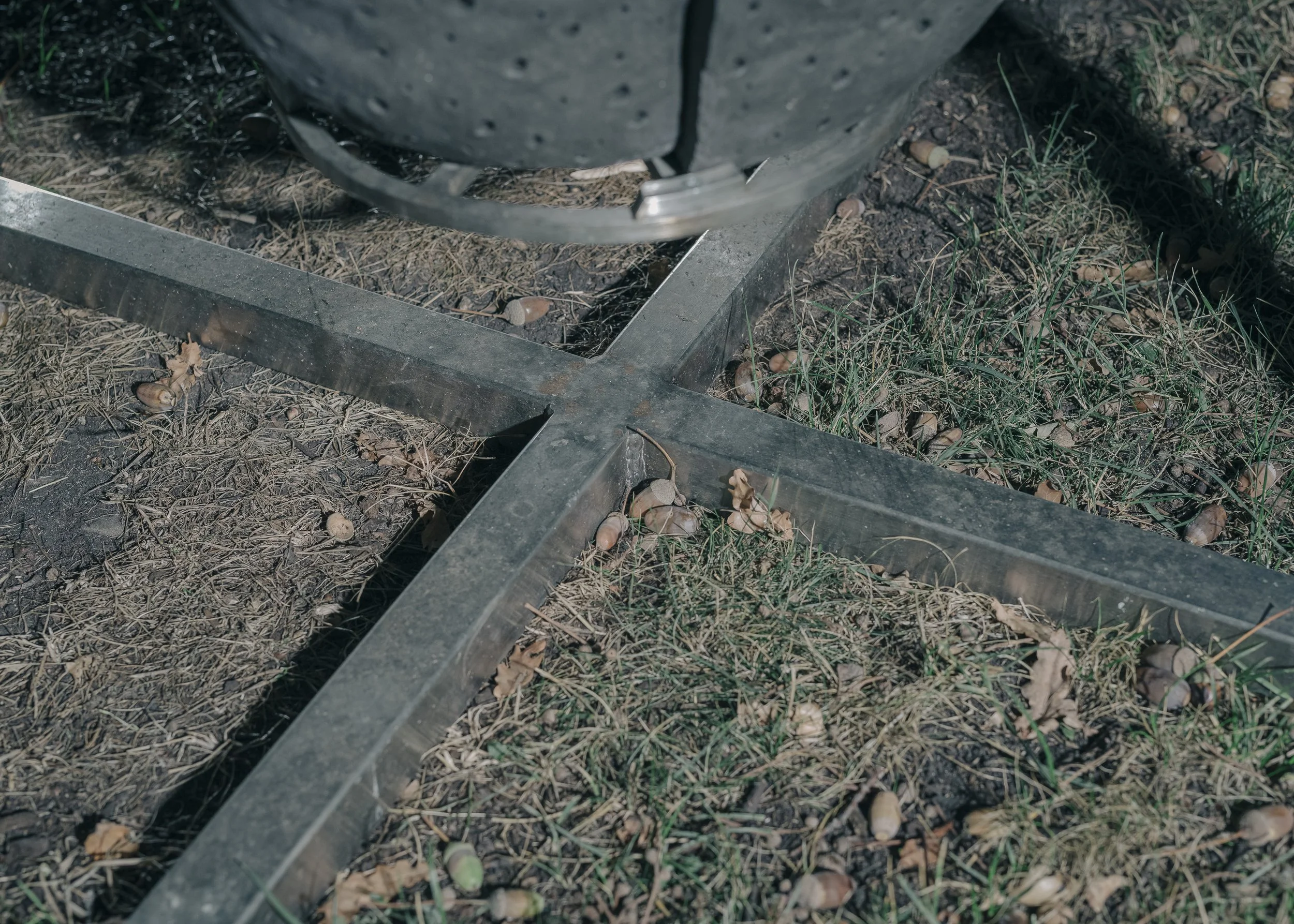
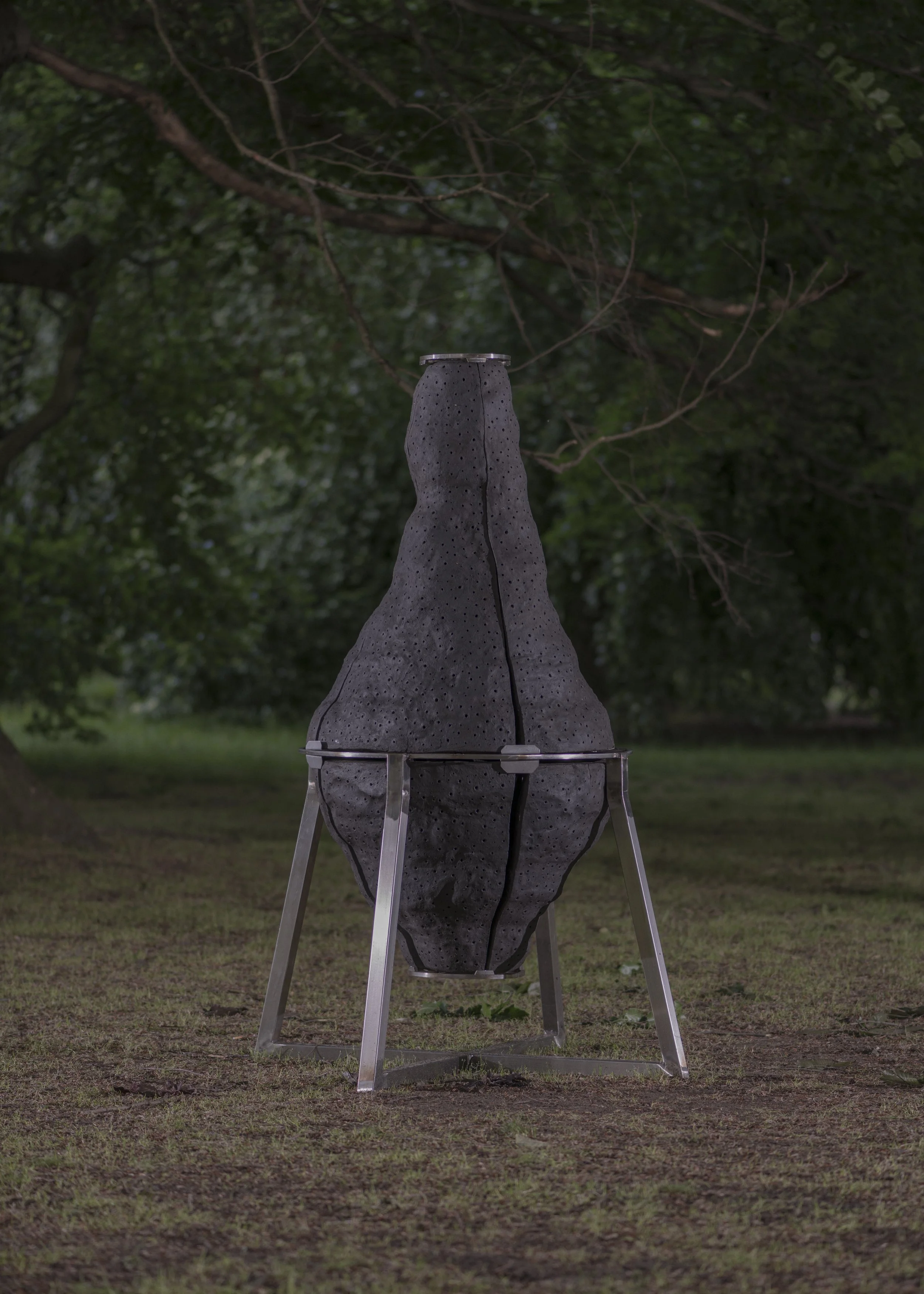
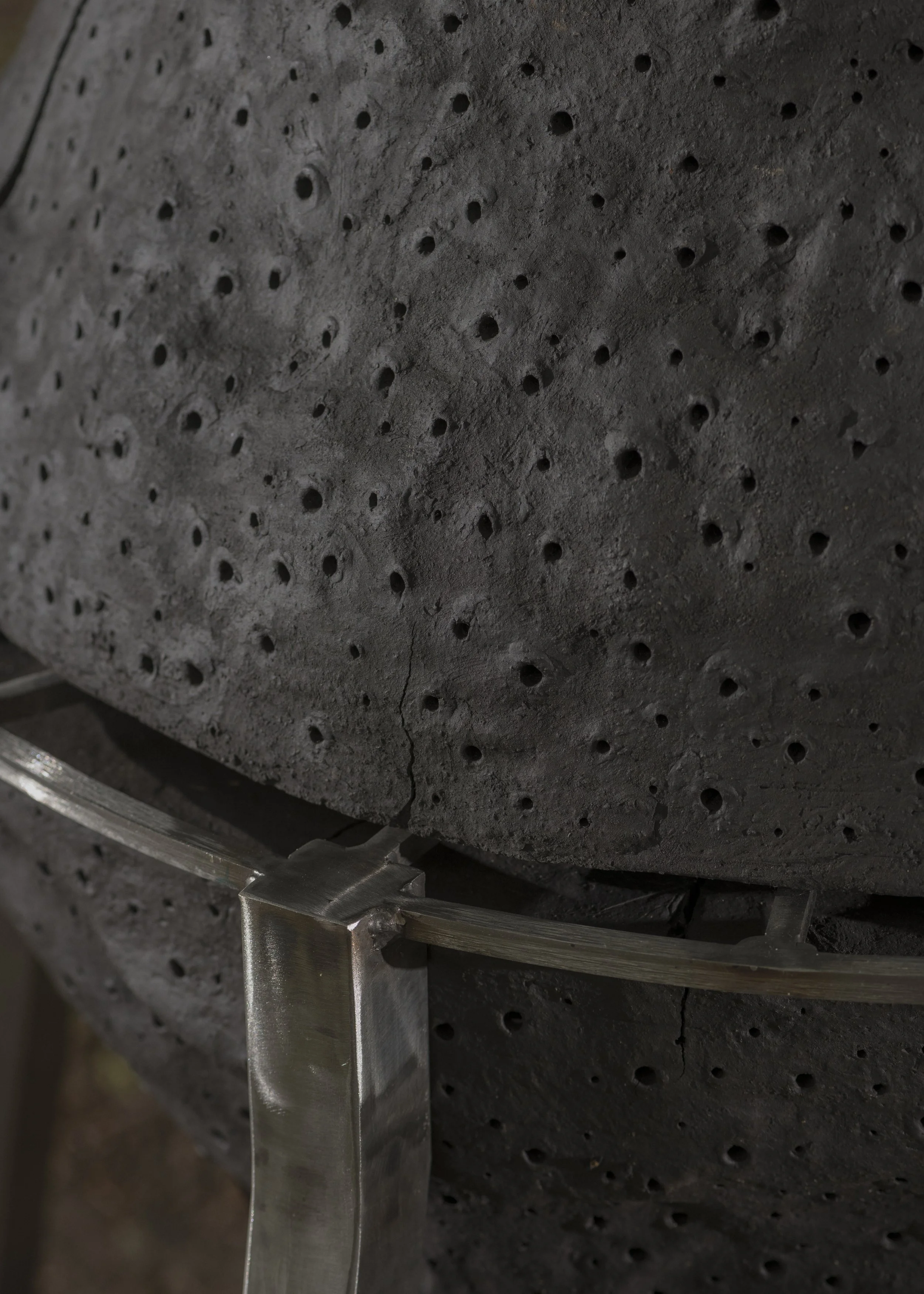
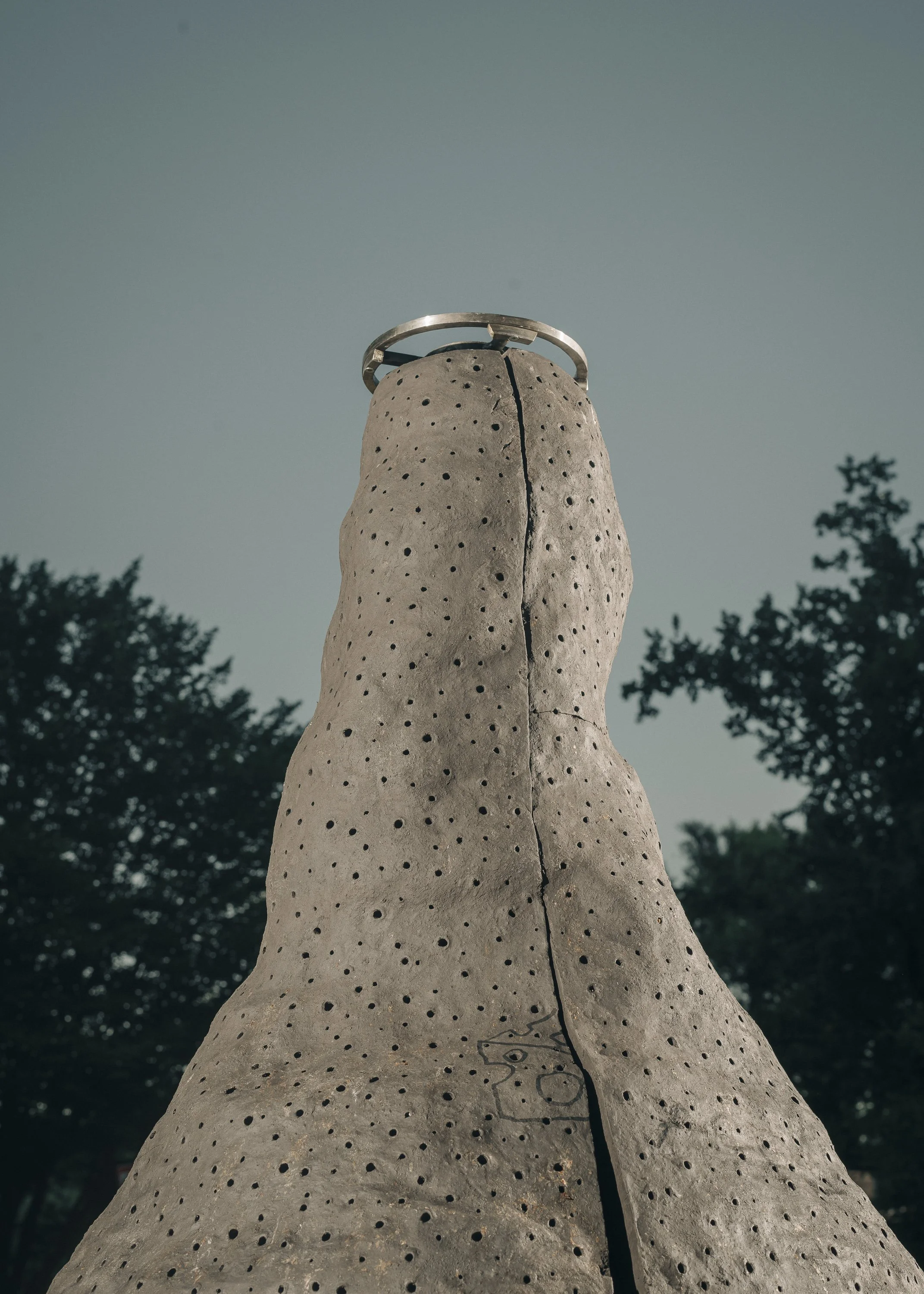
2022
110 x 110 x 160 cm
stainless steel
ceramic
insects
photos: Volker Crone
As part of the project in public space A Fragment of Eden, Taffner invited three additional artistic positions (Nike Kühn, Christian Holl and Lea Schürmann as well as Collectif Grapain) – conceived as satellites moving through the city during the exhibition period. His own contribution was the Insektenhotel, a sculpture offering shelter for insects at various sites across Hanover.
Visitors could engage with the work through a dedicated app, which encouraged them to explore the surrounding flora and fauna while reflecting on local biodiversity and the conditions of life within the urban environment. In this way, the Insektenhotel became both habitat and interface – a point of contact between humans, insects, and their shared ecosystem.
The Italian geoscientist Antonio Stoppani described humanity as early as 1873 as a new telluric power, capable of rivaling the great forces of nature in strength and universality. In this framing, humankind is not only placed on the same level as natural forces but begins to be understood as the central geological force—one that can confront nature, overcome and tame it, and impose new patterns and logics upon it. In retrospect, Stoppani thus anticipated the significance of the term Anthropocene, which only emerged as a designation for our epoch in the 2000s.
Humans, one might argue, often stand at the epicenter of their own perception: they compose and shape their surroundings, imbuing them with meaning—or not. It seems almost inevitable that, especially in Western societies, this self-referential logic would eventually begin to turn in circles. Consequently, urban living spaces are understood predominantly as human spaces. Pets are the main exception, though their shelters—doghouses, birdcages, or similar structures—are usually little more than accessories, added rather than thoughtfully integrated. In most cases, such comforts are reserved only for domesticated species.
Yet cities have long since become habitats for many “wild” animals, which have entered into symbiotic relationships or opportunistic cohabitations with urban structures and logics. Raccoons, pigeons, foxes, and a variety of songbirds are only a few of the more familiar examples. Insects, however, rarely come to mind in connection with urban life, largely because of their size. The reciprocal significance of insects and urban green spaces is still far from common sense. Especially for species that live in colonies, such as ants or bees, protected habitats are essential for survival and reproduction, which in turn are crucial for maintaining balanced and self-sustaining vegetation.
This is where Malte Taffner’s project Insektenhotel begins. It rethinks the creation of animal habitats in urban contexts: instead of asking how animal life can adapt to the city, the work considers how humans might create suitable living spaces for non-human species within culturally shaped and altered terrains. The insect hotel, with its sculptural character, establishes a presence of its own. Taffner deliberately plays with aesthetic references: by designing the structure to resemble a minimalist sculpture, he invokes the symbolism of canonised art. On the one hand, this visual language attracts the attention of passersby; on the other, it encourages a heightened sensitivity in how they approach and engage with the object.
Text: Felix Koberstein
In 2021 Taffner got invited by the Kestner Gesellschaft Hannover to implement an installation in public space.
A Fragment of Eden was the third sub-project within the framework of Open Worlds, a research project of the Museum für Gegenwartskunst Siegen, the Kestner Gesellschaft Hannover, IMAGINE THE CITY Hamburg and the Museum Marta Herford. Together with artists, curators and users, the four institutions for contemporary art are developing digital parcours and artistic installations in urban spaces that intertwine physical and virtual experiences.
Funded by the Kultur Digital programme of the German Federal Cultural Foundation. Funded by the Federal Government Commissioner for Culture and the Media.
https://kestnergesellschaft.de/de/ausstellung/62
Interview
https://www.interkit.app